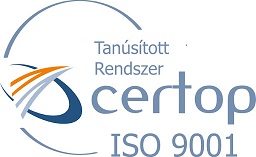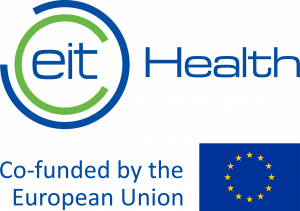Research
The development of science has now made it possible for a scientific discipline to thoroughly get to know and understand the phenomena taking place in the world, to document them in its own language, and to teach the accumulated knowledge. At the same time, these phenomena cannot be examined by only one field of science, as the same can be studied by other sciences, approached from different perspectives. It follows from the above that the methodology of education can also be inter- and transdisciplinary.
Through a Grid, Clearly
A moiré módszer alkalmazása scoliosisban
In 1874, after Lord Rayleigh had studied the resultant pattern, the so-called moiré fringes of two overlapping grids, he concluded that the phenomenon could be useful for measurement purposes. Further research proposed moiré topography for measurement of the human body. The main advantages of moiré technique are that it is non-invasive, fast, free of harmful radiation and cost-effective. A moiré technique algorithmized proper to the calculation of the curvature angle of the spine, could complement or substitute X-ray images. However, the workload and the reliability of applied evaluation approaches required for the interpretation of moiré images are not inconsiderable. Therefore, the Institute of Transdisciplinary Discoveries supports the development of an automated method for calculating the curvature angle of the single-curve scoliotic spine based on existing or new evaluating algorithms. Since to the success of the moiré method a dedicated partnership of engineers and physicians, respectively the synchronization of technical-biomedical knowledge is needed, our institute – in accordance with its profile – considers as particularly important to help interdisciplinary interactions.
Optical arrangement of projection moiré technique [1]
[1] Bogdán, Cs. The Moiré Method and its Application in Scoliosis In: Bogdán, Cs., Háber I. E., Szőke, A. (eds): Proceedings of the 4th International Interdisciplinary 3D Conference Engineering Section, Pécs, Hungary, October 5-6, 2018, pp. 81-87. ISBN: 978-963-429-267-8 Proceedings of the 4th International Interdisciplinary 3D Conference Engineering Section, Pécs, Hungary, October 5-6, 2018, pp. 81-87. ISBN: 978-963-429-267-8
MakerSpaceX – Starlink to the Collaboration
The makerspace project of the Institute of Transdisciplinary Discoveries
A makerspace, vagy más néven digitális közösségi alkotóműhely, olyan, ötletek és tervek legyártására szolgáló tér, ahol különböző tudományágak, szakmák, valamint művészetek művelői kortól és karrierszinttől függetlenül digitális és fizikai eszközökkel igyekeznek fejleszteni a szakmai kompetenciáikat, illetve új eredményeket elérni. Ezek a jól megszervezett és felépített alkotóműhelyek szignifikáns tanulmányi többletet és előremenetelt jelentenek a különböző tudományágak és szakmák művelőinek. Az alkotóterekre egyre inkább olyan módszerként gondolnak, amely a tanulóközösség számára biztosítja a kibontakozást a kreativitás, gyakorlati tervezést igénylő magasabb rendű problémamegoldás, kivitelezés és a munkafolyamatok begyakorlásához szükséges ismétlések tekintetében. Így azon túl, hogy ösztönzőleg hatnak a multi-, inter- és transzdiszciplináris interakciókra, az alkotóterek elősegítik a műhelyek fizikai határain kívül eső közösségi együttműködéseket is. Azonban önmagában egy csúcstechnológiás alkotóműhely felépítése nem elegendő. A kollaboráció módszereinek és kultúrájának ismerete, valamint az innovációmenedzsment megértése szintén alapvető. Ezen igények a Transzdiszciplináris Kutatások Intézetének szemléletében és széles spektrumú, szakmákat és diszciplínákat összefogni kívánó törekvésében – már csak a nomen est omen elve alapján is – megoldásra találnak.






